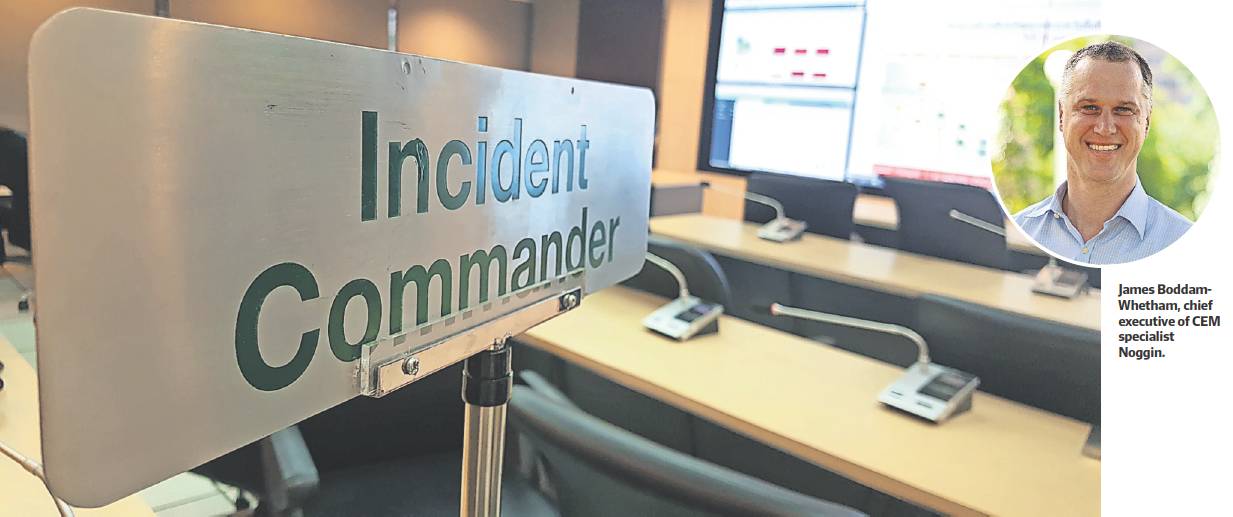Digital-driven critical event management
As the frequency and severity of disruptive critical events continue to grow around the world, critical event management must undergo a digital transformation in order to make organisations more resilient in the face of the unexpected.
Some organisations have historically viewed critical event management (CEM) as a grudge purchase and have treated it as a checkbox compliance exercise.
Yet from civil unrest and supply chain disruptions to the impact of the COVID-19 pandemic and climate change, organisations are opening their eyes to the fact that they can no longer afford to be unprepared to deal with critical events.
Indeed, the issue has become more pressing as disaster season begins earlier in the year, and fires, floods and storms also extend geographically into areas previously considered beyond their reach.
In response, by 2025, 70 per cent of chief executives will mandate a culture of organisational resilience to survive concurrent threats from COVID-19, cybercrime, severe weather events, civil unrest and political instability, according to Gartner.
Like other important business processes, though, CEM needs to go through a digital transformation in order to ensure it runs efficiently and efficiently in a time of crisis.
This is very difficult when it has traditionally been a manual, paper-centric process with binders dedicated to every eventuality.
In the modern age, organisations can no longer afford for their people to be sifting through reams of paper when responding to an incident. Nor can they let siloed data sources and communication issues hamper the organisation’s efforts to manage disruption.
Modern critical event management platforms feature intelligent workflows, making it easier for staff to manage processes even if they are unfamiliar with the business’ various critical event management plans.
These platforms can automatically draw on external data sources, such as disaster reports, weather forecasts and other data feeds which take advantage of the XML-based Common Alert Protocol.
What’s more, critical event management has conventionally been viewed as an internal, centralised process which runs from an emergency operations centre.
The impact of the pandemic has made it clear that, in the event of a critical incident, organisations can’t assume they will be able to gather all their key people in one place, says James Boddam-Whetham, chief executive of Australian CEM specialist Noggin.
To cope with these challenges, modern critical event management platforms must be optimised for use by distributed teams and mobile users, Boddam-Whetham says.
Mobile command structures give responders a head start on activating their plans when disaster strikes, with role responsibilities for incident command system positions and action plans.
‘‘People have this picture in their mind of a busy command centre, the walls covered in screens displaying critical information, but the pandemic has shown us that you can’t always rely on all your key people being in the same room,’’ he says.
‘‘Just like digital transformation and collaboration tools helped distributed teams work effectively during lockdown, your critical event management platform must be able to create a virtual emergency operations centre which is easily available to whoever needs it, wherever they need it.’’
For its part, the Noggin platform brings together the management of smaller and routine safety and security risks and incidents, along with full crisis and emergency management capability.
This approach allows organisations to manage all aspects of a critical event in one place and gain consolidated visibility across those aspects.
This helps because one of the key, but often overlooked, objectives of resilience is to address the ‘‘butterfly effect’’ – mitigating the impacts of smaller disruptions before they become larger critical events or disasters.
Barring that, resilience structures and strategies should help ensure the traceability of larger critical events back to their smaller origins.
This way, critical event response teams can learn to be aware of smaller trigger disruptions and better equipped to respond to them, before such incidents cascade into critical events.
CEM has many moving parts, which requires situational awareness as multiple contingency plans are implemented simultaneously.
The impact of the pandemic has made it clear that critical events can last for extended periods, requiring robust handover processes between shifts and different staff members over time.
Structured collaboration is required now that multiple teams are involved in any critical event response. To have data-driven discussions about operational improvements, teams must have the same structured data to begin with, Boddam-Whetham says.
‘‘Critical events themselves have become increasingly complex and multi-faceted, crossing formerly siloed domains such as safety, security and emergency,’’ he says. ‘‘As a result, best practices across these disciplines must be implemented by responding personnel via multiuse case solutions.
‘‘Digitising best practice through a robust critical event management platform ensures that, whatever challenges an organisation faces, it is always well-equipped to respond quickly and effectively in order to keep the business on track.’’
